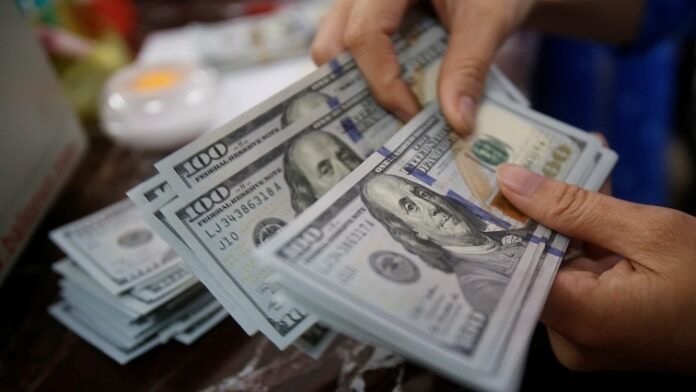The U.S. dollar slipped on Friday as traders anxiously awaited clarity on President Donald Trump’s upcoming tariff announcements.
The uncertainty surrounding the details of reciprocal tariffs has left investors on edge, unsure of how to position themselves in the currency market. As Trump’s announcement nears next week, market watchers are left to speculate on the potential economic impact.
Marc Chandler, chief market strategist at Bannockburn Global Forex, highlighted the pervasive sense of uncertainty: “The one word that I keep hearing over and over from clients and on earnings calls and things is uncertainty. And you hear this from the central bankers as well.”
He added, “The one thing we do know is that on April 2, we’re going to get reciprocal tariffs. We don’t know exactly what that means,” which has led to a broad consolidation in the dollar’s performance.
Tariff Concerns and Mixed Economic Signals
Although traders have experienced brief moments of optimism that the tariffs may not be as harsh as initially feared, lingering worries remain. Many believe that the tariffs could harm economic growth and potentially reignite inflation.
On Wednesday, Trump revealed that a 25% tariff would be applied to imported cars and light trucks starting on April 3, further fueling market concerns.
“We think that the initial announcement would open the door for further negotiations, and the final impact of tariffs would not be as bad as feared,” explained Mohit Kumar, a senior economist at Jefferies.

Still, the uncertainty continues to overshadow the markets, making it difficult for traders to predict the dollar’s next move.
Despite this volatility, the dollar’s decline persisted even after U.S. inflation data for February came in higher than expected. Core inflation rose by 0.4%, exceeding forecasts. However, Chandler noted that this was “really old news,” and that U.S. bond rallies have provided some stability in the market, with Treasury yields dropping.
Global Market Reactions and Economic Data
International data also painted a mixed picture, influencing the dollar’s performance against other currencies. In Europe, inflation data for March fell well below expectations in both France and Spain, which heightened speculation of another rate cut by the European Central Bank.
Meanwhile, economic sentiment in Germany and Italy showed signs of weakness, with unemployment rising in Germany and Italian consumer confidence faltering.
The dollar weakened by 0.57% against the yen, trading at 150.19 yen per dollar, in line with the drop in U.S. Treasury yields. Meanwhile, the euro rose by 0.17%, reaching $1.0819, bolstered by the softer inflation data in the eurozone.
[ Minister Ramokgopa Voices Disappointment Over Load Shedding Setback ]
On the other hand, the British pound saw modest gains, strengthening by 0.08% to $1.2955, fueled by unexpected consumer spending growth in the UK.
“British shoppers unexpectedly loosened their purse strings last month,” according to official data, which surprised many analysts who had anticipated a decline in sales volumes amid sluggish overall economic growth.
In the cryptocurrency market, Bitcoin experienced a notable drop, falling 3.25% to $84,469.42, reflecting the broader market volatility.
Catch up with the latest news from The Times Post on WhatsApp by following our channel. Click here to join.
Kindly follow @thetimespost on Instagram. On X (Twitter), follow @thetimespost2.















